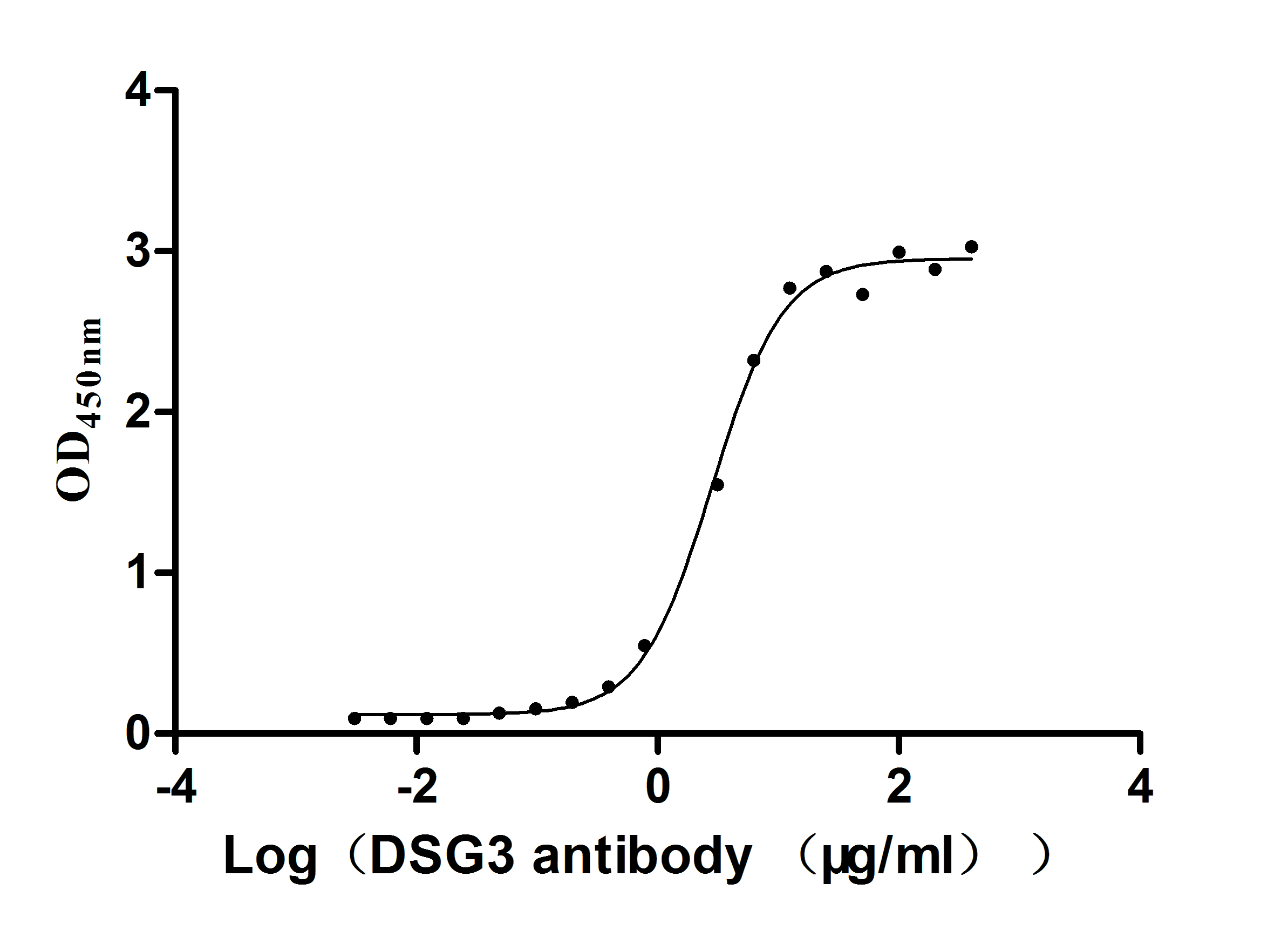Recombinant Human immunodeficiency virus type 1 group M subtype D Protein Tat
-
中文名称:Recombinant Human immunodeficiency virus type 1 group M subtype D Protein Tat,Yeast
-
货号:CSB-YP324746HLJ
-
规格:
-
来源:Yeast
-
其他:
-
中文名称:Recombinant Human immunodeficiency virus type 1 group M subtype D Protein Tat,Yeast
-
货号:CSB-EP324746HLJ
-
规格:
-
来源:E.coli
-
其他:
-
中文名称:Recombinant Human immunodeficiency virus type 1 group M subtype D Protein Tat,Yeast
-
货号:CSB-EP324746HLJ-B
-
规格:
-
来源:E.coli
-
共轭:Avi-tag Biotinylated
E. coli biotin ligase (BirA) is highly specific in covalently attaching biotin to the 15 amino acid AviTag peptide. This recombinant protein was biotinylated in vivo by AviTag-BirA technology, which method is BriA catalyzes amide linkage between the biotin and the specific lysine of the AviTag.
-
其他:
-
中文名称:Recombinant Human immunodeficiency virus type 1 group M subtype D Protein Tat,Yeast
-
货号:CSB-BP324746HLJ
-
规格:
-
来源:Baculovirus
-
其他:
-
中文名称:Recombinant Human immunodeficiency virus type 1 group M subtype D Protein Tat,Yeast
-
货号:CSB-MP324746HLJ
-
规格:
-
来源:Mammalian cell
-
其他:
产品详情
-
纯度:>85% (SDS-PAGE)
-
基因名:tat
-
Uniprot No.:
-
别名:tat; Protein Tat; Transactivating regulatory protein
-
种属:Human immunodeficiency virus type 1 group M subtype D (isolate NDK) (HIV-1)
-
蛋白长度:full length protein
-
表达区域:1-86
-
氨基酸序列MDPVDPNLES WNHPGSQPRT ACNKCHCKKC CYHCQVCFIT KGLGISYGRK KRRQRRKPPQ GDQAHQVPIP EQPSSQSRGD PTGPKK
-
蛋白标签:Tag type will be determined during the manufacturing process.
The tag type will be determined during production process. If you have specified tag type, please tell us and we will develop the specified tag preferentially. -
产品提供形式:Lyophilized powder
Note: We will preferentially ship the format that we have in stock, however, if you have any special requirement for the format, please remark your requirement when placing the order, we will prepare according to your demand. -
复溶:We recommend that this vial be briefly centrifuged prior to opening to bring the contents to the bottom. Please reconstitute protein in deionized sterile water to a concentration of 0.1-1.0 mg/mL.We recommend to add 5-50% of glycerol (final concentration) and aliquot for long-term storage at -20℃/-80℃. Our default final concentration of glycerol is 50%. Customers could use it as reference.
-
储存条件:Store at -20°C/-80°C upon receipt, aliquoting is necessary for mutiple use. Avoid repeated freeze-thaw cycles.
-
保质期:The shelf life is related to many factors, storage state, buffer ingredients, storage temperature and the stability of the protein itself.
Generally, the shelf life of liquid form is 6 months at -20°C/-80°C. The shelf life of lyophilized form is 12 months at -20°C/-80°C. -
货期:Delivery time may differ from different purchasing way or location, please kindly consult your local distributors for specific delivery time.Note: All of our proteins are default shipped with normal blue ice packs, if you request to ship with dry ice, please communicate with us in advance and extra fees will be charged.
-
注意事项:Repeated freezing and thawing is not recommended. Store working aliquots at 4°C for up to one week.
-
Datasheet :Please contact us to get it.
靶点详情
-
功能:Nuclear transcriptional activator of viral gene expression, that is essential for viral transcription from the LTR promoter and replication. Acts as a sequence-specific molecular adapter, directing components of the cellular transcription machinery to the viral RNA to promote processive transcription elongation by the RNA polymerase II (RNA pol II) complex, thereby increasing the level of full-length transcripts. In the absence of Tat, the RNA Pol II generates short or non-processive transcripts that terminate at approximately 60 bp from the ini...显示更多
-
亚细胞定位:Host nucleus, host nucleolus. Host cytoplasm. Secreted.
-
蛋白家族:Lentiviruses Tat family




















